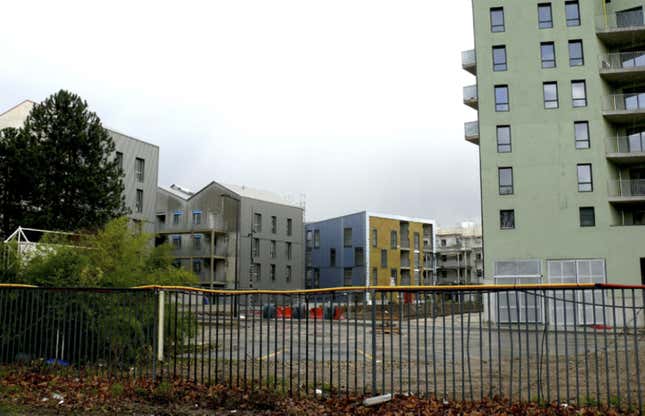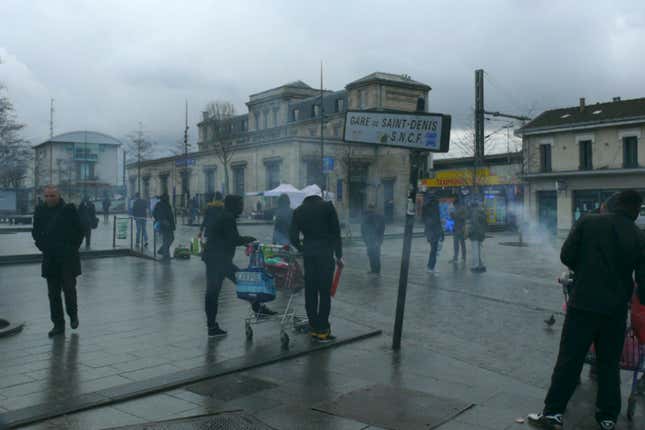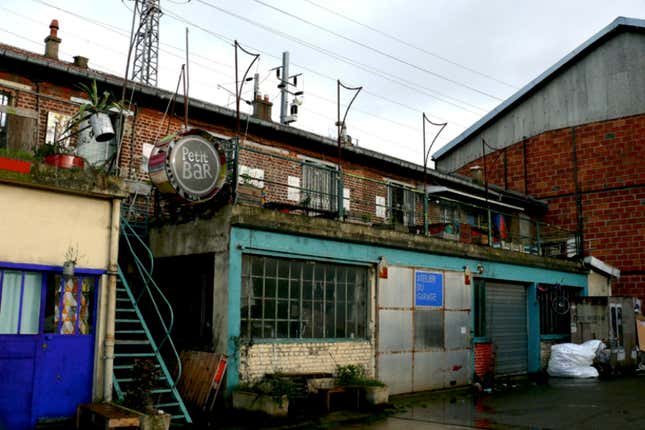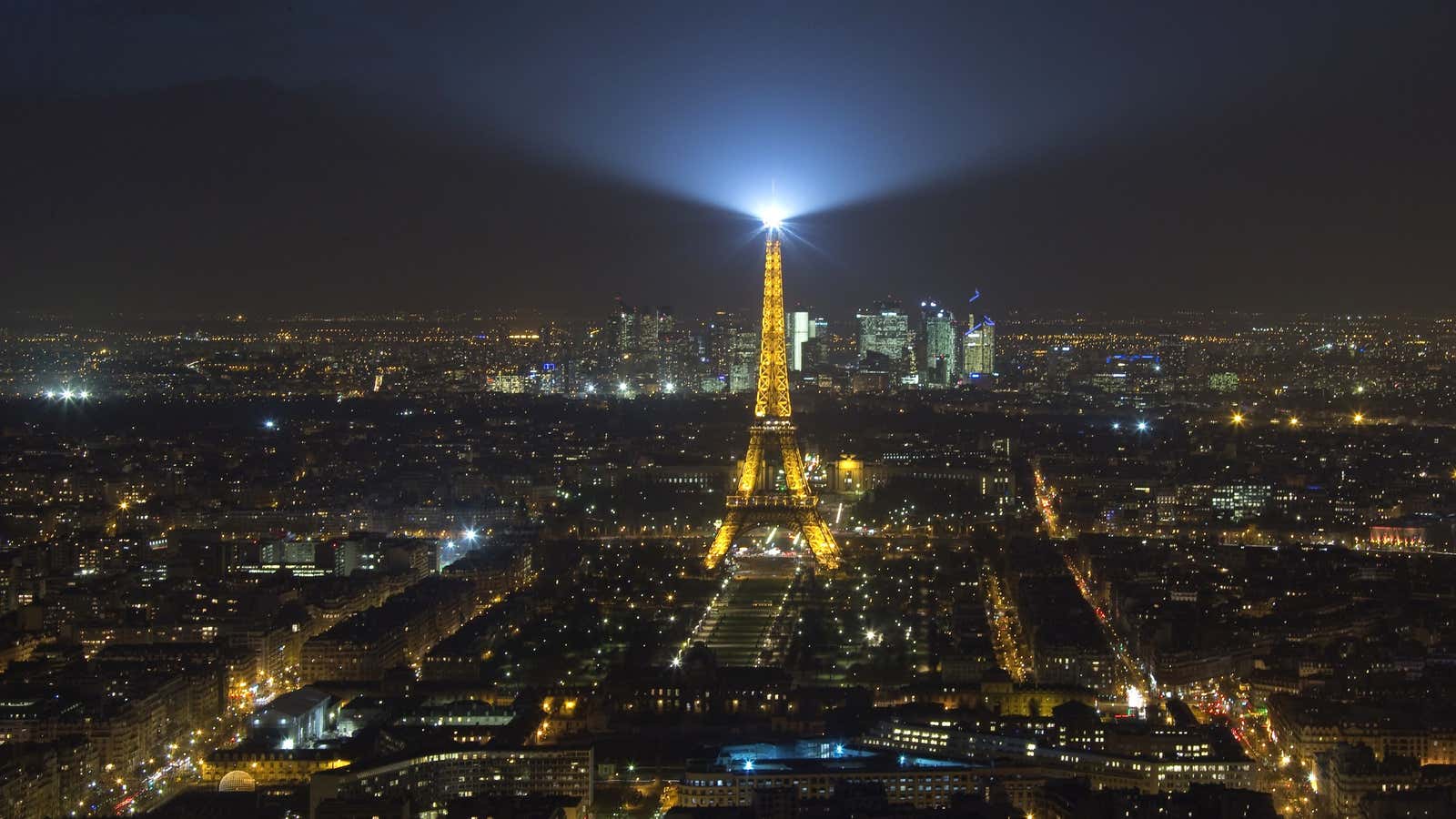“All the bad things we say about Paris are true,” the French publisher and writer Eric Hazan wrote in his book, Paris sous tension (Paris Under Stress, La Fabrique Éditions, 2011). “That the preppy streets of the center look like the duty free area of an international airport, that the apartheid between rich and poor is at its severest, that the slice of working-class areas in the north and the east shrinks everyday,” It’s a dark overview of the French capital, but one many French people will find apt.
Now that Paris is about to expand beyond its borders with the “Grand Paris” project, one wonders about the destiny of territories soon to be integrated into the megalopolis. Will the expansion of Paris make it possible to reduce territorial ghettoization? Or will it drive gentrification, transforming working class areas into upper middle-class, or bobo (bourgeois bohemian) neighborhoods, forcing the poorest to move even further away from the city center?

For many Parisians, Le Grand Paris signals two things: First, the expression refers to a project named Métropole du Grand Paris (“Metropolis of Grand Paris”); second, to a future subway network called Grand Paris Express. These two plans demonstrate a desire to make Paris on par with the world’s leading “alpha cities”—London, New York,and Tokyo. Fast, interconnected, sprawling.
The future Métropole du Grand Paris is to be an intercommunalité: a grafting of area suburbs to the urban core. This has raised concerns that certain towns, particularly those closest to the core, will receive outsized authority. The process begins in Jan. 2016, and will swallow up at least 124 towns in the adjacent departments of Hauts-de-Seine, Seine-Saint-Denis, and Val-de-Marne.
But there remain significant differences in nature between Paris and its neighboring communities. “If I live in Montrouge and work in Paris, I say that I go to Paris and come back to Montrouge,” says Claire Schreiber, a master’s candidate in territorial and urban strategies at the Institute for the Study of Politics (Sciences Po). “There is a transition, a period of travel. And this means that we consider Paris and Montrouge as two separate entities.” Unlike the US, where suburban identity tends to bleed inward, many French people living outside of Paris take pride in their anti-parisianisme.
The subway network, Grand Paris Express, will inevitably blur these lines. New lines will connect more suburbs to central Paris. But new lines will also link more suburbs to other suburbs, responding to a real problem: currently, “the region of Paris is approximately divided into two areas, the living-area in the east, and the working-area in the west,” Schreiber explains. Grand Paris Express would allow inhabitants of the Île-de-France region circumvent congested central Paris when they have to go from one suburb to another, thus connecting the more commercial western areas with the residential east.
Le Grand Paris also concerns social-advancement initiatives. And there is a need. If the rate of unemployment is lower in Île-de-France than in the rest of the country, that breeds internal resentments. Already, the French government is seen as overly doting on the facilities and economy of greater Paris. Le Grand Paris entails an equality initiative (a redistribution mechanism set up to reduce wealth differences between regional governments) via the pooling of fiscal resources. A law on the conversion of public land for housing and quotas for building public housing in general were also implemented in Jan. 2013.
But the actual building of Le Grand Paris projects will encounter inevitable obstacles that might negate any accompanying social benefits. Besides the problems endemic to governing and financing major infrastructural projects, there is a major town-planning issue to contend with. Between Paris and its suburbs, the most symbolic obstacle is indeed physical and hard to miss: it is the ring road that runs the periphery of Paris—“le périph”. This major road isolates Paris from the adjacent cities. It contains multiple lanes of frequently congested traffic, and the crossing points are few and far between.
Le périph is a real wall. The crossing points in and out of Paris-proper are literally called “gates.” We Parisians use the expression “Paris intra-muros” to speak of the difference between inner Paris and the outer suburbs, which we know to be stark.
In the north of Paris, at the very other side of le périph, there is one city that stands in defiant opposition to the culture of the capital: Saint-Denis. Ranked third in terms of population in the whole region, it is an emblematic French suburb—one that made headlines in 2005 when local youths rioted against racialized police brutality (Saint-Denis is populated by large Arab and black African communities). Considered a quartier sensible—a neighborhood struggling with violence and poverty—the city owes another aspect of its notoriety to the French rap group NTM, native sons of Saint-Denis, who frequently drop the city’s name in their verses. It is also known worldwide for its miles of graffiti and politically inspired street art.
Yet, within a year, this rebellious town will be officially, if not spiritually, a neighborhood of Paris.
On one of the main streets of Saint-Denis, rue de la République, Taos, a brunette in her fifties who works at the Cité des Sciences, the largest science-and-industry museum in Europe, has just bought a slice of pizza and offers to share it with me. She has been living in Saint-Denis for 15 years, and begins her spiel with a meaningful “Alas:”
“It’s deteriorating a bit more every day,” she laments. “This is an area that the French republic has left behind. There is no urbanization here, not a single bookshop. And after a certain hour, one doesn’t want to hang out. For a woman like me, it’s unconceivable to sit and have a drink in a bar.”

“For shopping and cultural outings, I go to Paris” Taos says. Does she feel more parisienne than dionysienne, as the inhabitants of Saint-Denis are called? “Neither one nor the other,” she replies, grimly.
In the cafes and shops of Saint-Denis, the term “Grand Paris” does not ring a bell. When you ask people if this project will make them feel “more Parisian,” to them, it’s a rather stupid question. “What does that mean?” asks the man behind the counter at Le Week-End, a bar and tabac. “I have always felt Parisian,” adds a local customer, despite being born in Algeria.
For Taos, Le Grand Paris does not represent hope, as its designers may have intended. “This is a political operation which will lead to exclude the poorest in order to add a few square meters to the city. It’s always the same—cities become more bobo because artists settle in, the price of real estate increases, and misery is pushed back to further borders.”
It is true that some well-known artists’ studios have been settling in Saint-Denis for a few years now. Opened in 2010 in an abandoned building nested between the River Seine and the Saint-Denis canal, the 6B is one of the hotspots for alternative Parisian culture. An “green district” called Neaucité is now under construction nearby. The French website Streetpress has declared the area a symbol of “happy gentrification,” despite the grumblings of locals such as Taos.
On the other bank of the canal, there is La Briche. This former industrial zone is shared by about fifty designers, craftsmen, plastic artists, and sculptors. Zoé, a young illustrator, and Elodie, an architect, are residents. After studying in Paris proper, they settled in Saint-Denis three years ago ,“by chance, especially for the studio. Here you can find empty and not too expensive spaces near Paris,” they explain. They were also attracted by the opportunities for collaboration, being so close to so many other creative types, and the flexibility of city regulations. “We are also members of a brass band. In some places, the relationship with the local authorities can be like ‘go away, you are making too much noise,’ but here, they give you contracts so you do the work that’s close to your heart.”
“At the beginning, I felt like a pioneer,” Zoé recalls, smiling. “But, more and more, bobos are coming to Saint-Denis.” In that regard, for the two girls, the Le Grand Paris is somewhat problematic.
“The big question is to know whether the transition created by Le Grand Paris will go the right direction, that is to say, for social diversity,” Elodie says. “We must create spaces in which local people can live. But I think we don’t have very much influence on that.”
Zoé is less ambivalent: she feels outright threatened by the encroachment of the capital. “The premises we live in are in bad shape… And those lands could be interesting for real estate developers. In front of our building, they are renovating the whole area. They kept the 6B, But they might just chase us out and build something else instead.”

Gentrification is hardly a new concept for dionysiens. Seine-Saint-Denis is the poorest department in the region, where the median standard of living is the lowest of all metropolitan departments in France, according, to a 2013 report from the the French National Institute for Statistic and Economics Studies (INSEE). Historically, Montreuil (also adjacent to Paris) is the most representative case of gentrification. But more recently, we Parisians talk a lot about the city of Pantin, and the media raise concerns of a coming “brooklynisation.”
The extent of this gentrification is debated by researchers, but inner Paris is an edifying example. As the specialist Anne Clerval claims, “living in Paris is an obvious symbol of social domination, and inhabitants of the middle and working-class suburbs don’t misunderstand that.”
Last month, in the suburb of Nanterre, a meeting was organized around the question of a working-class future after Le Grand Paris, including social-science researchers and a city councilor. “All participants agreed that Le Grand Paris would further a capitalistic and private-sector mode of production for the city, which will take it away from popular interests,” Metropop.org reported. In the end, “one was left wondering about the effectiveness of public authorities in the management of this new dynamic.”
But the issue of future territory-governance is still under discussion at the National Assembly (the lower house of the French Parliament), even as the groundbreaking for Le Grand Paris rapidly approaches. For now, it appears that the new metropolis will have less power than expected—a development which has irritated many politicians. Among them is Patrick Devedjian (from the center-right Union for a Popular Movement party), co-president of the planning commission for Le Grand Paris, who argues that the metropolis should have strategical powers to be able to compete with London.
Carlos Da Silva, a socialist politician, remains skeptical. “Let’s not tolerate a weak metropolis and these segregative, ghettoizing intercommunalités,” he urged at a Jan. 17 session of the National Assembly.
Foreigners may think that these problems are not specifically French. Indeed, competing for global relevance while fighting the rising cost of living in ascending megalopolises is an observably international issue. But, as the celebrated French jouranlist Philippe Meyer told Le Monde, Paris is a singular case in many ways, at least in Europe: “a 100 kilometer city with 20,000 inhabitants per kilometer. When we denounce the gentrification of London or of Berlin, we talk about cities where the density of population—4,800 inhabitants per kilometer for London and 3,800 for Berlin—makes the transformations less tumultuous, less fast.”
The suburbs of Paris are dense in more ways than one. They vibrant, full of life, culturally impactful, and crowded with competing opinions. Given this notorious tenacity, who’s to say what side of le périph will change the other more?
